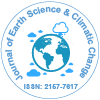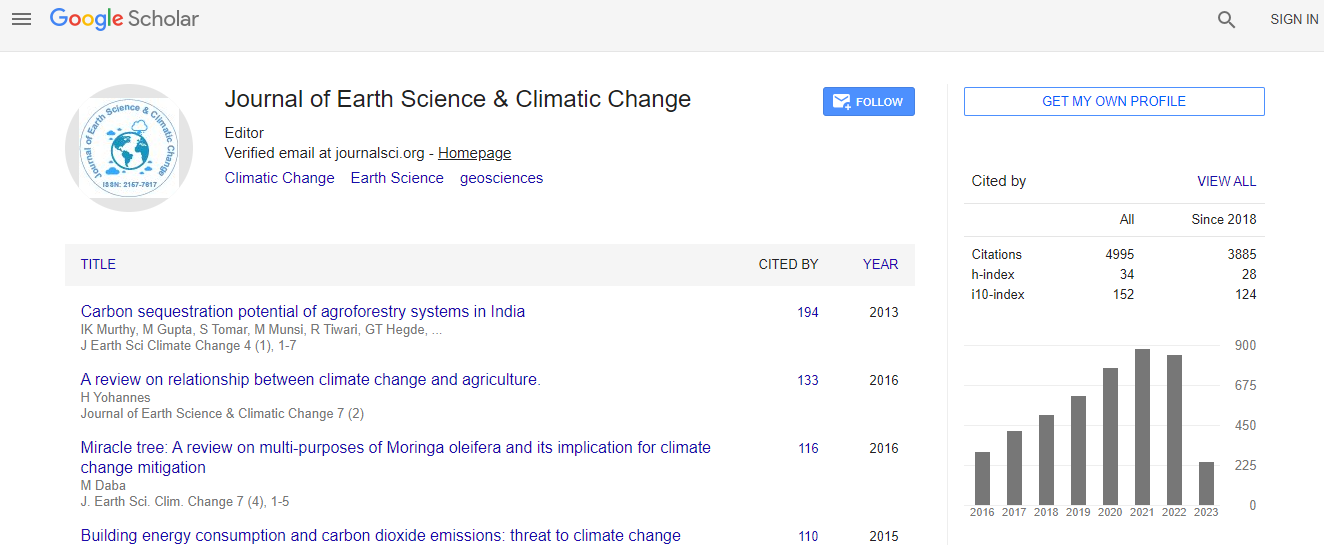Our Group organises 3000+ Global Conferenceseries Events every year across USA, Europe & Asia with support from 1000 more scientific Societies and Publishes 700+ Open Access Journals which contains over 50000 eminent personalities, reputed scientists as editorial board members.
Open Access Journals gaining more Readers and Citations
700 Journals and 15,000,000 Readers Each Journal is getting 25,000+ Readers
Google Scholar citation report
Citations : 5125
Journal of Earth Science & Climatic Change received 5125 citations as per Google Scholar report
Journal of Earth Science & Climatic Change peer review process verified at publons
Indexed In
- CAS Source Index (CASSI)
- Index Copernicus
- Google Scholar
- Sherpa Romeo
- Online Access to Research in the Environment (OARE)
- Open J Gate
- Genamics JournalSeek
- JournalTOCs
- Ulrich's Periodicals Directory
- Access to Global Online Research in Agriculture (AGORA)
- Centre for Agriculture and Biosciences International (CABI)
- RefSeek
- Hamdard University
- EBSCO A-Z
- OCLC- WorldCat
- Proquest Summons
- SWB online catalog
- Publons
- Euro Pub
- ICMJE
Useful Links
Recommended Journals
Related Subjects
Share This Page
In Association with

Combating desertification through management of drylands: Lessons learned
5th International Conference on Earth Science & Climate Change
Donald Gabriels
Ghent University, Belgium
Posters & Accepted Abstracts: J Earth Sci Clim Change
Abstract
Drylands have between 35% and 95% of deficit of water in their soils. If a permanent pluviometric deficit occurs, this phenomenon is called ��?aridity��?, while ��?drought��? is related to a temporary deficit. Drylands are also affected by several types of irregular droughts. As ��?desertification��? is more related to drought than to aridity; combating desertification is managing drylands in view of their preservation or restoration. The SUMAMAD (Sustainable Management of Marginal Drylands) project was implemented by UNESCO��?s Man and the Biosphere (MAB) Program together with the United Nations University-Institute for Water, Environment & Health (UNU-INWEH) and funded by Flanders, Belgium (2008-2014). The management of drylands was mainly done in sites of UNESCO-MAB reserves. A solar desalinization plant was built in the Omayed Biosphere Reserve in Egypt. Chicken farming in compacted grassland was carried out in the Hunshandake sand area of China. Deficit irrigation for quinoa production was applied in the southern Bolivian Altiplano. Community based grazing was managed in the drylands of the Dana Biosphere Reserve in Jordan. Arabic gum was produced and composting techniques were applied in the arid western plain zone of the Thar Desert in India. Agro-forestry and organic manure was used in the Mare aux Hippopotames Biosphere Reserve of Burkina Faso. Degraded dryland ranges were restored in the Lal Suhanra Biosphere of Pakistan. Flood water spreading was applied in the Gareh Bygone Plain of Iran. Reforestation with Acacia trees was done in the Bou Hedma Reserve of Tunisia. The projects and successful but also less successful results are described and discussed.Biography
Email: donaldgabriels@gmail.com

 Spanish
Spanish  Chinese
Chinese  Russian
Russian  German
German  French
French  Japanese
Japanese  Portuguese
Portuguese  Hindi
Hindi 
